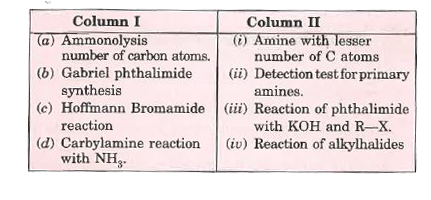Match the defects given in Column I with the statements in given Column II.

The correct Answer is:(i)→(c ),(ii)→(a), (iii)→(d),(iv)→ (b)
Simple vacancy defect and simple interstitial defect occur in non-ionic solids. In the former, some lattice sites are vacant. Hence, density decreases . In the latter, some extra constituents particles are present in the interstitial sites . Hence, density increases.
Topper's Solved these Questions
- BOOK - PRADEEPCHAPTER - STATES OF MATTER: SOLID MATTEREXERCISE - NCERT EXEMPLAR PROBLEMS (ASSERTION AND REASON)5videos
STATES OF MATTER: SOLID MATTER
- BOOK - PRADEEPCHAPTER - STATES OF MATTER: SOLID MATTEREXERCISE - NCERT EXEMPLAR PROBLEMS (LONG ANSWER)4videos
STATES OF MATTER: SOLID MATTER
- BOOK - PRADEEPCHAPTER - STATES OF MATTER: SOLID MATTEREXERCISE - NCERT EXEMPLAR PROBLEMS (SHORT ANSWER)10videos
STATES OF MATTER: SOLID MATTER
- BOOK - PRADEEPCHAPTER - STATES OF MATTER : GASES AND LIQUIDESEXERCISE - VIII. ASSERTION-REASON TYPE QUESTIONS (TYPE-II)12videos
STATES OF MATTER : GASES AND LIQUIDES
- BOOK - PRADEEPCHAPTER - STRUCTURE OF ATOMEXERCISE - Competition Focus (JEE (Main and Advanced)/Medical Entrance (IX. Assertion And Reason Type Questions (Type II))12videos
STRUCTURE OF ATOM
Similar Questions
Knowledge Check
- Question 1 - Select One
Match the defects gives in column I with statements given in column II and mark the appropriate choice.
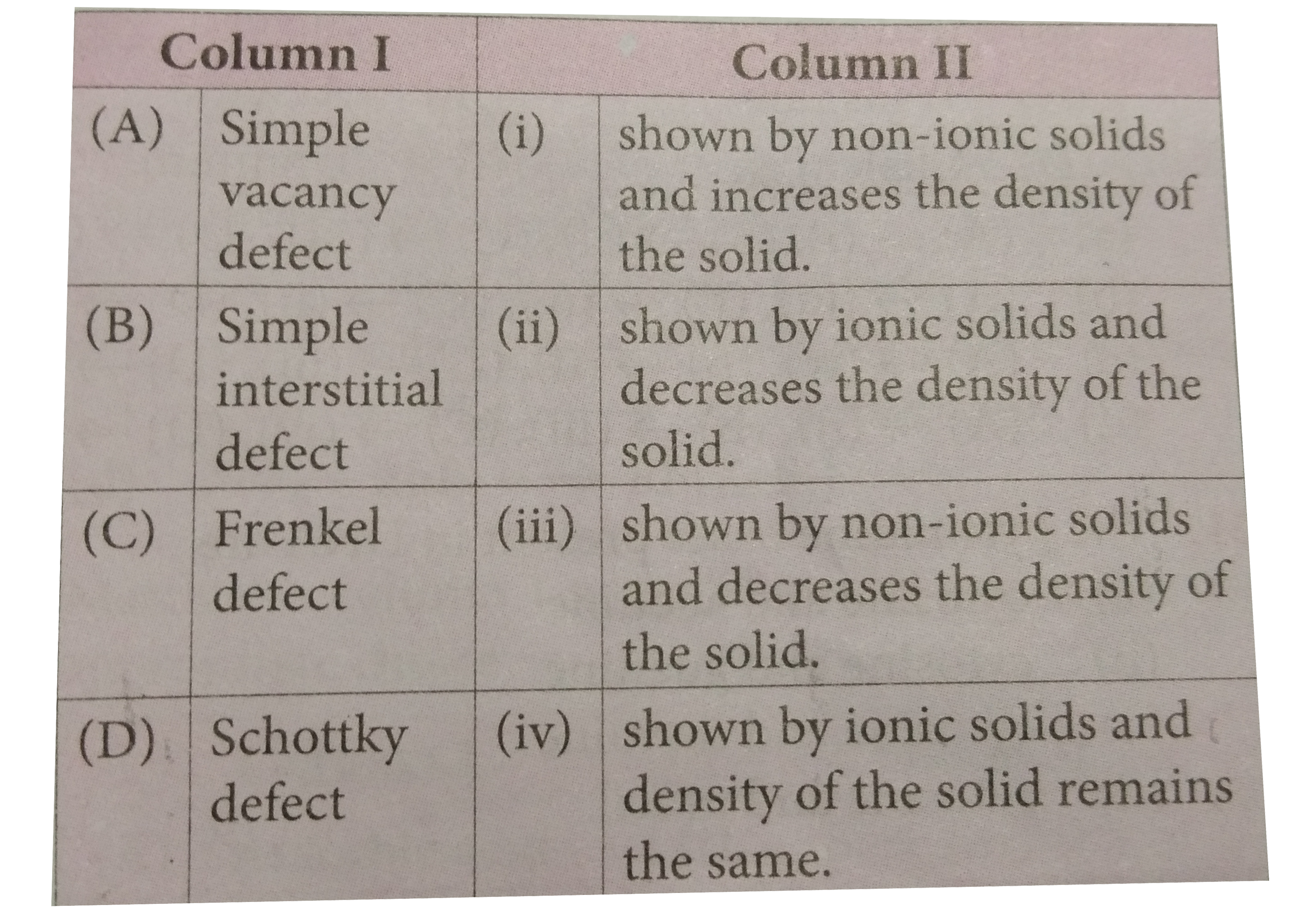 AA→iv,B→iii,C→ii,D→iBA→iii,B→iv,C→I,D→iiCA→iii,B→I,C→iv,D→iiDA→I,B→iii,C→iv,D→ii
AA→iv,B→iii,C→ii,D→iBA→iii,B→iv,C→I,D→iiCA→iii,B→I,C→iv,D→iiDA→I,B→iii,C→iv,D→ii
Match the reactions given in Column I with the statements given in Column II
 View Solution
View SolutionMatch the terms given in Column I with the statements given in Column II
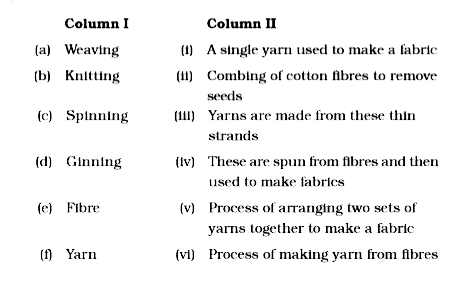 View Solution
View SolutionMatch the types of defect given in Column I with the statement given in Column II.
Column I Column II (i) Impurity defect (a) NaCl with anionic sites called F-centres (ii) Metal excess defect(b) FeO with Fe3+(iii) Metal deficiency defect (c) NaCl withSr2+ and some cationic sites vacantView SolutionMatch the detergents given in Column I with their uses given in Column II.
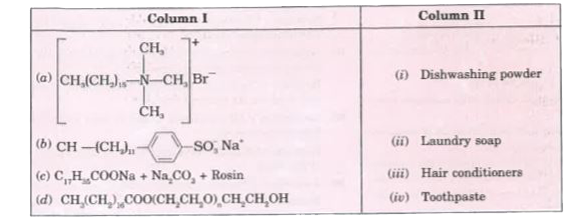 View Solution
View SolutionMatch the objects given in Column I with the materials given in Column II.
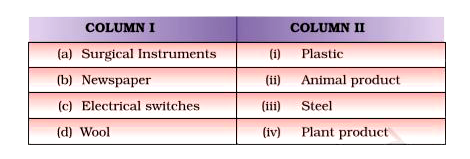 View Solution
View Solutionmatch the types of defect given in column I with the statement given in column II.
 View Solution
View SolutionMatch the reactions given in Column I with the names given in Column II.
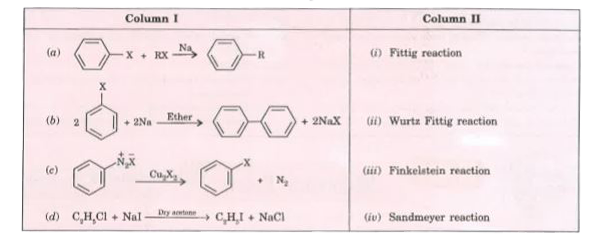 View Solution
View Solution


